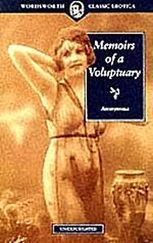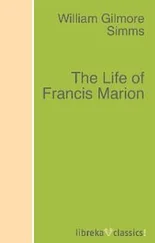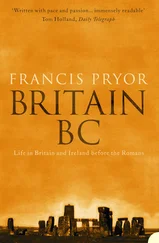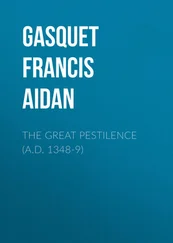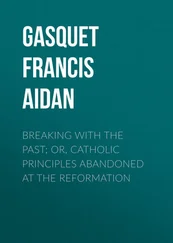Francis Gasquet - English Monastic Life
Здесь есть возможность читать онлайн «Francis Gasquet - English Monastic Life» — ознакомительный отрывок электронной книги совершенно бесплатно, а после прочтения отрывка купить полную версию. В некоторых случаях можно слушать аудио, скачать через торрент в формате fb2 и присутствует краткое содержание. Жанр: foreign_religion, foreign_antique, foreign_prose, на английском языке. Описание произведения, (предисловие) а так же отзывы посетителей доступны на портале библиотеки ЛибКат.
- Название:English Monastic Life
- Автор:
- Жанр:
- Год:неизвестен
- ISBN:нет данных
- Рейтинг книги:5 / 5. Голосов: 1
-
Избранное:Добавить в избранное
- Отзывы:
-
Ваша оценка:
- 100
- 1
- 2
- 3
- 4
- 5
English Monastic Life: краткое содержание, описание и аннотация
Предлагаем к чтению аннотацию, описание, краткое содержание или предисловие (зависит от того, что написал сам автор книги «English Monastic Life»). Если вы не нашли необходимую информацию о книге — напишите в комментариях, мы постараемся отыскать её.
English Monastic Life — читать онлайн ознакомительный отрывок
Ниже представлен текст книги, разбитый по страницам. Система сохранения места последней прочитанной страницы, позволяет с удобством читать онлайн бесплатно книгу «English Monastic Life», без необходимости каждый раз заново искать на чём Вы остановились. Поставьте закладку, и сможете в любой момент перейти на страницу, на которой закончили чтение.
Интервал:
Закладка:
The same account describes the cupboards near to the refectory door in which the monks kept their towels —
“All the forepart of the aumbry was thorough carved work, to give air to the towels.” There were “three doors in the forepart of either aumbry and a lock on every door, and every monk had a key for the said aumbries, wherein did hang in every one clean towels for the monks to dry their hands on, when they washed and went to dinner.”
We who see the cold damp-stained cloisters of the old monastic buildings as they are to-day, as at Westminster for example, may well feel a difficulty in realising what they were in the time of their glory. Day after day for centuries the cloister was the centre of the activity of the religious establishment. The quadrangle was the place where the monks lived and studied and wrote. In the three sides – the northern, eastern, and western walks – were transacted the chief business of the house, other than what was merely external. Here the older monks laboured at the tasks appointed them by obedience, or discussed questions relating to ecclesiastical learning or regular observance, or at permitted times joined in recreative conversation. Here, too, in the parts set aside for the purpose, the younger members toiled at their studies under the eye of their teacher, learnt the monastic observance from the lips of the novice-master, or practised the chants and melodies of the Divine Office with the cantor or his assistant. How the work was done in the winter time, even supposing that the great windows looking out on to the cloister-garth were glazed or closed with wooden shutters, must ever remain a mystery. In some places, it is true, certain screenwork divisions appear to have been devised, so as to afford some shelter and protection to the elder members and scribes of the monastery from the sharper draughts inevitable in an open cloister. The account given in the Rites of Durham on this point is worth quoting at length: —
“In the cloister,” says the writer – and he is speaking of the northern walk, set apart for the seniors – “in the cloister there were carrels finely wainscotted and very close, all but the forepart, which had carved work to give light in at their carrel doors. And in every carrel was a desk to lie their books on, and the carrel was no greater than from one stanchell (centre-bar) of the window to another. And over against the carrels, against the church wall, did stand certain great aumbries of wainscot all full of books, with great store of ancient manuscripts to help them in their study.” In these cupboards, “did lie as well the old ancient written Doctors of the Church as other profane authors, with divers other holy men’s works, so that every one did study what doctor pleased him best, having the Library at all times to go and study in besides these carrels.”
In speaking of the novices the same writer tells us that —
“over against the said treasury door was a fair seat of wainscot, where the novices were taught. And the master of the novices had a pretty seat of wainscot adjoining to the south side of the treasury door, over against the seat where the novices sat; and there he taught the novices both forenoon and afternoon. No strangers or other persons were suffered to molest, or trouble the said novices, or monks in their carrels while they were at their books within the cloister. For to this purpose there was a porter appointed to keep the cloister door.”
In other monasteries, such for example as Westminster and St. Augustine’s, Canterbury, these enclosed wooden sitting-places seem to have been very few in number, and allowed only to those officers of the house who had much business to transact for the common good. At Durham, however, we are told that “every one of the old monks” had his own special seat, and in each window of the south cloister there were set “three of these pews or carrels.”
3. THE REFECTORY
The refectory, sometimes called the fratry or frater-house , was the common hall for all conventual meals. Its situation in the plan of a monastic establishment was almost always as far removed from the church as possible, that is, it was on the opposite side of the cloister quadrangle and, according to the usual plan, in the southern walk of the cloister. The reason for this arrangement is obvious. It was to secure that the church and its precincts might be kept as free as possible from the annoyance caused by the noise and smells necessarily connected with the preparation and consumption of the meals.
As a rule, the walls of the hall would no doubt have been wainscotted. At one end, probably, great presses would have been placed to receive the plate and linen, with the salt-cellars, cups, and other ordinary requirements for the common meals. The floor of a monastic refectory was spread with hay or rushes, which covering was changed three or four times in the year; and the tables were ranged in single rows lengthways, with the benches for the monks upon the inside, where they sat with their backs to the panelled walls. At the east end, under some sacred figure, or painting of the crucifix, or of our Lord in glory, called the Majestas , was the mensa major , or high table for the superior. Above this the scylla or small signal-bell was suspended. This was sounded by the president of the meal as a sign that the community might begin their refection, and for the commencement of each of the new courses. The pulpit, or reading-desk, was, as a rule, placed upon the south side of the hall, and below it was usually placed the table for the novices, presided over by their master.
“At which time (of meals),” says the Rites of Durham , “the master observed this wholesome order for the continual instructing of their youth in virtue and learning; that is, one of the novices, at the election and appointment of the master, did read some part of the Old and New Testament, in Latin, in dinner-time, having a convenient place at the south end of the high table within a fair glass window, environed with iron, and certain steps of stone with iron rails of the one side to go up into it and to support an iron desk there placed, upon which lay the Holy Bible.”
In most cases the kitchens and offices would have been situated near the western end of the refectory, across which a screen pierced with doors would probably have somewhat veiled the serving-hatch, the dresser, and the passages to the butteries, cellars, and pantry.
Besides the great refectory there was frequently a smaller hall, called by various names such as the “misericord,” or “oriel” at St. Alban’s, the “disport” ( deportus ) at Canterbury, and the “spane” at Peterborough. In this smaller dining-place those who had been bled and others, who by the dispensation of the superior were to have different or better food than that served in the common refectory, came to their meals. At Durham, apparently, the ordinary dining-place was called the “loft,” and was at the west end of a larger hall entered from the south alley of the cloister, called the “frater-house.” In this hall “the great feast of Saint Cuthbert’s day in Lent was holden.” In an aumbry in the wainscot, on the left-hand of the door, says the author of the Rites of Durham , was kept the great mazer, called the grace-cup , “which did service to the monks everyday, after grace was said, to drink in round the table.”
4. THE KITCHEN
Near to the refectory was, of course, the conventual kitchen. At Canterbury this kitchen was a square of some forty-five feet; at Durham it was somewhat smaller; and at Glastonbury, Worcester, and Chester the hall was some thirty-five feet square. A small courtyard with the usual offices adjoined it; and this sometimes, as at Westminster and Chester, had a tower and a larder on the western side. According to the Cluniac constitutions there were to be two kitchens: the one served in weekly turns by the brethren, the other in which a good deal of the food was prepared by paid servants. The first was chiefly used for the preparation of the soup or pottage, which formed the foundation of the monastic dinner. The furniture of this kitchen is minutely described in the Custumals: there were to be three caldaria or cauldrons for boiling water: one for cooking the beans, a second for the vegetables, and a third, with an iron tripod to stand it upon, to furnish hot water for washing plates, dishes, cloths, etc. Secondly, there were to be four great dishes or vessels: one for half-cooked beans; another and much larger one, into which water was always to be kept running, for washing vegetables; a third for washing up plates and dishes; and a fourth to be reserved for holding a supply of hot water required for the weekly feet-washing, and for the shaving of faces and tonsures, etc. In the same way there were to be always in the kitchen four spoons: the first for beans, the second for vegetables, the third (a small one naturally) for seasoning the soup, and the fourth (an iron one of large size) for shovelling coals on to the fire. Besides these necessary articles, the superior was to see that there were to be always at hand four pairs of sleeves for the use of the servers, that they might not soil their ordinary habits; two pairs of gloves for moving hot vessels, and three napkins for wiping dishes, etc., which were to be changed every Thursday. Besides these things there were, of course, to be knives, and a stone wherewith to sharpen them; a small dish to get hot water quickly when required; a strainer; an urn to draw hot water from; two ladles; a fan to blow the fire up when needed, and stands to set the pots upon, etc.
Читать дальшеИнтервал:
Закладка:
Похожие книги на «English Monastic Life»
Представляем Вашему вниманию похожие книги на «English Monastic Life» списком для выбора. Мы отобрали схожую по названию и смыслу литературу в надежде предоставить читателям больше вариантов отыскать новые, интересные, ещё непрочитанные произведения.
Обсуждение, отзывы о книге «English Monastic Life» и просто собственные мнения читателей. Оставьте ваши комментарии, напишите, что Вы думаете о произведении, его смысле или главных героях. Укажите что конкретно понравилось, а что нет, и почему Вы так считаете.

